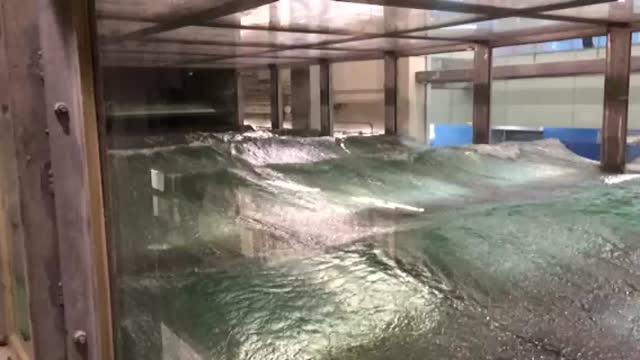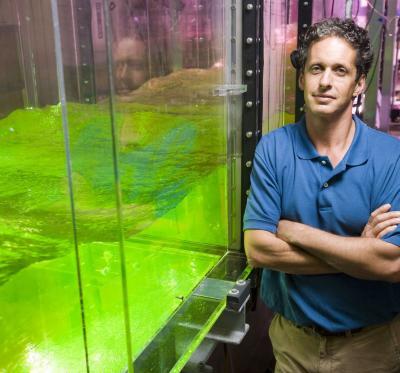Haus and colleagues will conduct further studies on hurricane intensity prediction in the new, one-of-a-kind Alfred C. Glassell, Jr., SUSTAIN research facility located at the UM Rosenstiel School. The SUrge-STructure-Atmosphere INteraction laboratory is the only facility capable of creating category-5 level hurricanes in a controlled, seawater laboratory. The nearly 65-foot long tank allows scientists to simulate major hurricanes using a 3-D wave field to expand research on the physics of hurricanes and the associated impacts of severe wind-driven and wave-induced storm surges on coastal structures.
The SUSTAIN research facility is the centerpiece of the new $45 million Marine Technology and Life Sciences Seawater Complex at the UM Rosenstiel School where scientists from around the world have access to state-of-the-art seawater laboratories to conduct an array of marine-related research.
The study, titled "The air-sea interface and surface stress under tropical cyclones" was published in the June 16 issue of the journal Nature Scientific Reports. The paper's lead author was Alex Soloviev of the UM Rosenstiel School and Nova Southeastern University Oceanographic Center and its co-authors include: Mark A. Donelan from the UM Rosenstiel School; Roger Lukas of the University of Hawaii; and Isaac Ginis from the University of Rhode Island.

This is the one-of-a-kind, Alfred C. Glassell, Jr., SUSTAIN research facility at the UM Rosenstiel School of Marine and Atmospheric Science, where Haus and colleagues will conduct further studies on hurricane intensity prediction.
(Photo Credit: UM Rosenstiel School of Marine and Atmospheric Science)

UM Rosenstiel Professor of Ocean Sciences and Co-Author of the Study, Brian Haus stands next to the Air-Sea Interaction Salt Water Tank (ASIST).
(Photo Credit: UM Rosenstiel School)
Source: University of Miami Rosenstiel School of Marine & Atmospheric Science